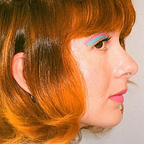Watch The Throne
Author’s Note: This essay contains spoilers for Game of Thrones and House of the Dragon, both the books and the TV adaptation.
Architect Ludwig Mies van der Rohe once remarked that “a chair is a very difficult object. A skyscraper is almost easier.” It’s a surprising, provocative consideration: that chairs, for all of their small-scale simplicity, still find ways to challenge us through their demands as both a decorative and functional object, embodying ideas and perspectives within the material manifestation of their fabricated forms.
Chairs are almost always an accessory, parts of an ensemble of furnishings. They’re hardly ever the center of attention in interior decor, unless it’s for a coffee table book that features hundreds of them or for an exhibition of design history like The Schaudepot at the Vitra Design Museum. Designers rarely (if ever) create only chairs, incorporating this kind of object into a whole portfolio of furniture that embodies their aesthetic values and craftsmanship. As Jesús Llinares of Andreu World points out, “Often we do not notice chairs, [but] they are nevertheless a real luxury, and a tremendously valuable object not for their price or exclusivity, but for being part of our life more than we are able to see.”
